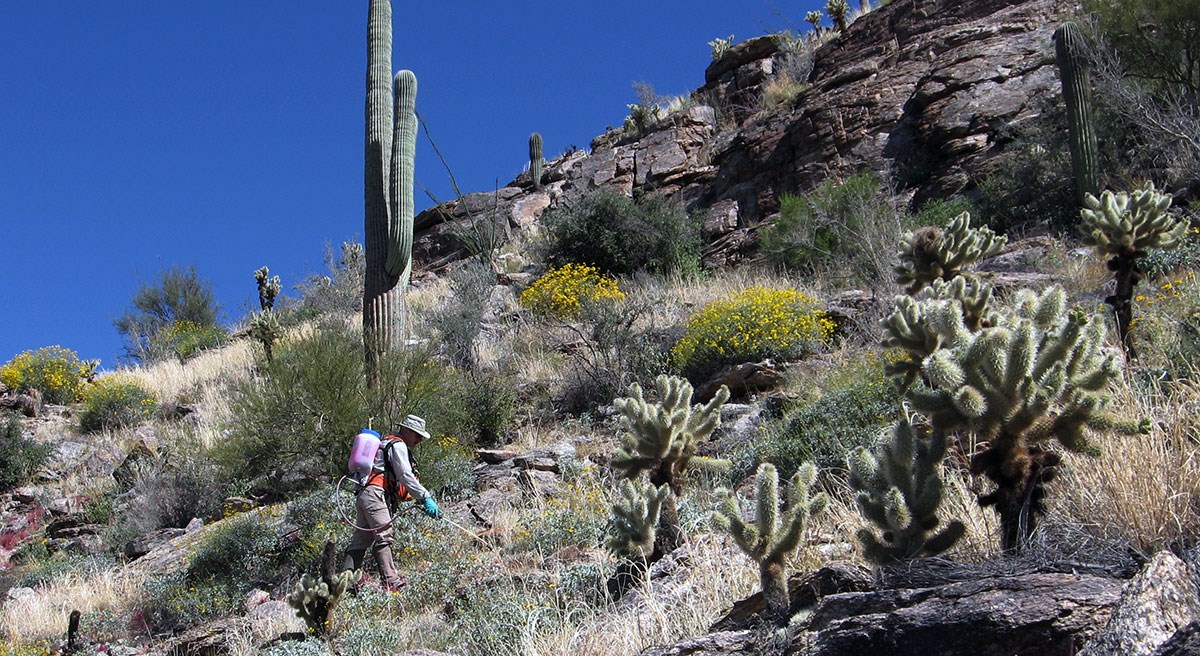Last updated: January 19, 2017
Article
Herbicides Effective on Invasive Grass Changing the Fire Regime of the Sonoran Desert

Saguaro National Park is battling a nonnative, invasive grass that is threatening to convert fire-proof Sonoran Desert vegetation into highly flammable grassland. Buffelgrass (Pennisetum ciliare) creates heavy continuous fuel loads. In the park, fuel loads have measured 1-4 tons per acre, which is many times greater than natural desert fuel loads. Historically, fires were extremely rare in the desert, but buffelgrass has the potential to create a grass-scrubland prone to intense fires.
Buffelgrass currently infests about 2,000 acres of the park and is spreading exponentially. A warmer climate will exacerbate the situation. Many scientists believe that local extinctions of saguaros could occur, and the desert and the wildlife it supports could be changed forever if buffelgrass goes unchecked.
The park has been fighting buffelgrass since the early 1990s. Control efforts include mainly volunteers and civic groups manually pulling plants and park staff and contracted conservation corps applying herbicide via backpack sprayers. Approximately one-third of the annual fire funding budget for control of invasives in the park goes to buffelgrass treatments and similar nonnative grasses.
As of 2013, buffelgrass has been largely removed from more than 500 acres in the park. Where it has been removed, native plant communities have responded well, and native plants are reoccupying areas where many had been suppressed or outcompeted by buffelgrass. Treated areas include wildland urban interface areas along the park boundary, where wildfires that would be fueled by buffelgrass can threaten the homes and lives of our neighbors, as well as critical infrastructure.
Despite the successes, buffelgrass is expanding faster than control efforts can keep pace. Different strategies are being considered, including spraying with a helicopter. The park has conducted or funded research into factors that affect buffelgrass growth, treatment methods for controlling it, ways to minimize the impact of treatments on native plants and animals, changes in ecosystem properties following invasion, and restoration of areas after buffelgrass is removed.
The fight against buffelgrass is a major collaborative effort among many governmental entities and private citizens. Dozens of groups and individuals came together in 2008 to form the Southern Arizona Buffelgrass Coordination Center, whose mission is to provide a regional information center that emphasizes an integrated management approach to control buffelgrass in southern Arizona (www.buffelgrass.org).
More information is on the park’s website. The Southwest Fire Consortium has produced a video about the issue.
Contact: Perry Grissom, fire ecologist
Email: e-mail us
Phone: (520) 733- 5134
